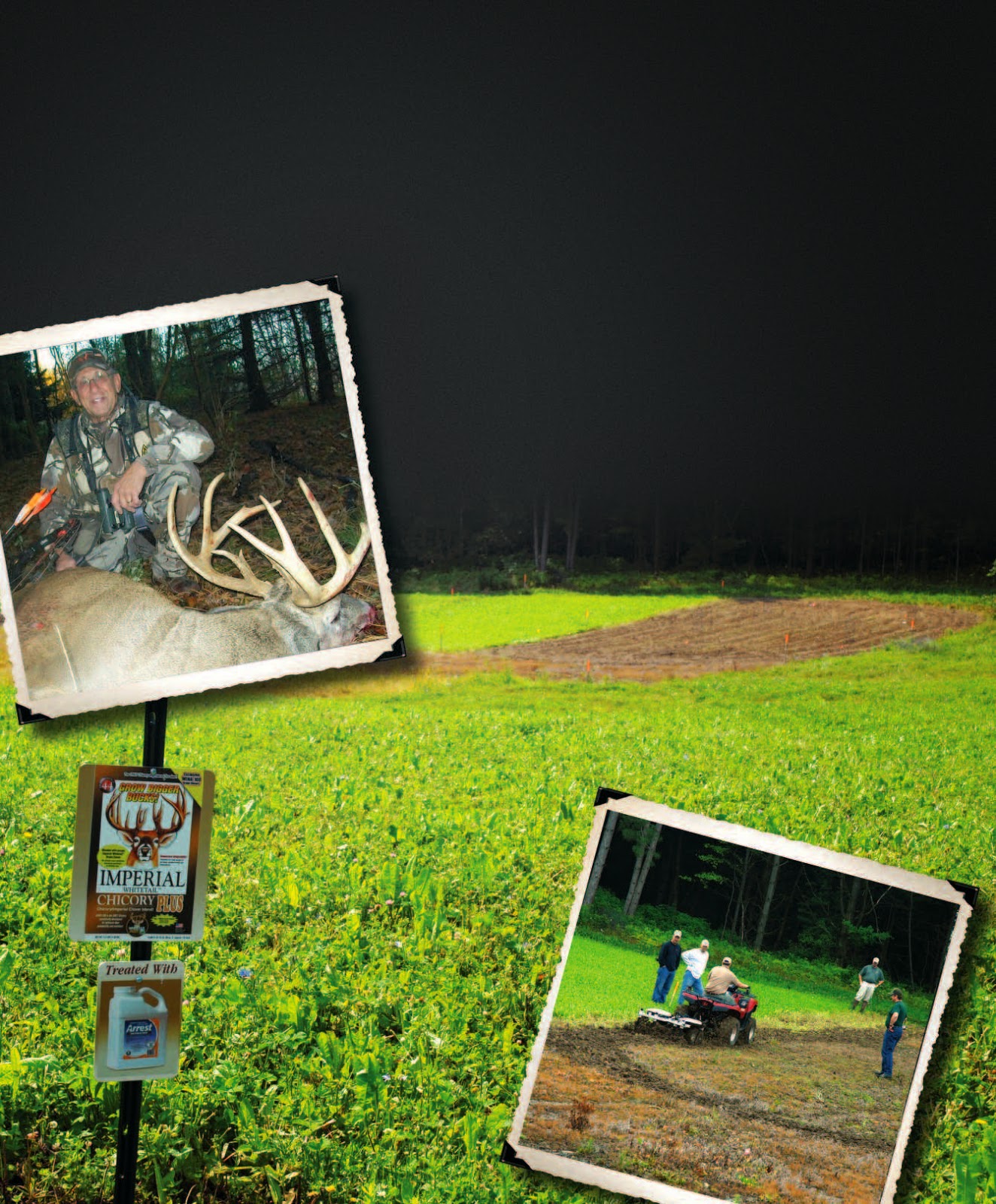Once upon a time, your granddaddy’s rye grass
field and an old, wooden tree stand was the only game in town. He planted the
greenfield, hoping seed would sprout, the drought wouldn’t be severe, and that
the deer had nothing else to eat. Today, that kind of thinking runs like a
Model-T at Daytona. Just because your daddy or granddaddy did it, doesn’t mean it
can’t improve. Take Fred Abbas, for example, a fellow from northern Michigan
who retired with a challenging ambition to hunt trophy bucks in his home state
of Michigan. Guess what? There weren’t any.
Perhaps he should have moved to Iowa,
Illinois, or Kansas. No, Abbas believed that he could change the environment
and create an incubator for big deer in a state with more licensed hunters than
the standing armies of most civilized countries. Was he crazy? Maybe — like a
fox. Today, thanks to a unique approach to the basic “greenfield” Abbas and his
son have become so successful that they host Away Outdoors Television where
they hunt on six leased farms and one they own to entertain mega-thousands of
viewers on where, when, and how to harvest big bucks in the land of the pumpkin
army.
BIG
PICTURE, SMALL PLOTS
The
Away properties consist of seven farms scattered over three counties in
southern Michigan with an average of four food plots on each property. These
modern day greenfields are located in remote areas, near thick cover or swamps.
“We try to encourage big bucks to come into smaller areas where, in one jump,
they can be safe,” Abbas said. The largest food plot is three acres, a tract
they don’t gun hunt over. “We bow hunt the edges, but the main purpose of the
field is to attract deer from surrounding farms, yet not pressure them,” Abbas
said. “We do a fringe hunt where we have stands well back into the timber that
surrounds the plot so that deer do not associate food with danger.” Abbas and
his son do most of the planting in spring and use a wide variety of Whitetail
Institute products including Alfa-Rack, Chicory Plus, Imperial Whitetail
Clover, and Imperial Whitetail Extreme. They plant and maintain plots with the
use of a tractor and the usual implements — disk, cultipacker, sprayer and
brush hog. Variety is a staple of their planting system so that deer have a
selection of plants to feed on. “Deer have different tastes and by giving a big
variety, we appeal to all deer and that helps keep them on our properties,”
Abbas said.
MEETING
BASIC NEEDS
Abbas
believes that deer are motivated by five factors: food, water, safety, curiosity
and reproduction and he bases the entire Away hunting system on that premise.
When selecting food plot locations, he uses topographical, aerial and plot maps
to locate the best plot sites with a high interest in remoteness, sufficient
cover, water or swamps nearby and fertile soil. Geographic structure also
dictates food plot locations and Abbas looks for variations of the land —
places where a structural change occurs because big bucks often travel those features.
“I happened to hunt near the side of a ridge when I saw antler tips pass by
down the slope,” said Abbas reflecting back to last season. “I couldn’t see
enough of the buck to shoot, but investigated the trail later on. To my surprise,
the buck followed a mini valley that allowed it to travel behind concealment. I
look for anything that may harbor a buck or influence its travel without
showing itself completely.” Abbas’ food plots are designed to draw and hold
deer on their farms, yet they don’t stop there. “Once we draw bucks in, we give
them more of what they need, such as minerals,” Abbas says. “We provide Kraze
and 30-06 Minerals so that they develop another bad habit,” he laughs, “and
then introduce them to mock scrapes on July 1.”
PUTTING
IT ALL TOGETHER
Today’s
modern food plot is miles away from granddaddy’s greenfield in a number of
ways. First, instead of rye or wheat with minimal nutrition, Whitetail
Institute has let science lead the way, and food plots now host a variety of nutritious
plants and legumes. We’ve learned that even peas and turnips are clearly
superior to the old green grass. Secondly, the very location is scientifically
designed. Greenfields were just that — green fields that happened in an old
clear cut or near a road so that farm equipment could harvest a crop. Hunters
have learned, like the Abbas’, that small plots in out-of-the-way locations
make big bucks feel safe, such that they will appear more readily during
shooting light. Also, modern tilling equipment designed for small tractors and
4-wheelers allows sportsmen to create nutritious chow in locations with
difficult access. Now food plots can provide much more than just attraction.
They can also provide high quality nutrition that can help create a healthier
herd and bucks with bigger antlers. Finally, the Abbas’ have perfected the art
of hunting small food plots, usually posting stands several hundred yards from
the field edge. They use a combination of ladder and hang-on stands, usually
about 20 feet high. Trail cameras have indicated that bucks often leave a field
an hour before dark, yet take up to two more hours to move several hundred
yards further in. With a productive food source nearby, they often bed at
random places rather than always seeking dense brush. The good-ole-days have
nostalgia for many of us… like hunting with granddaddy’s .30-30 rifle. However,
heading to the old wooden stand posted in the corner of a rye grass field is
often unproductive in that YOU could be a granddaddy before a big buck steps
out. Planting today’s high tech food plot products is the way to go. The field
is still green; science just makes it a whole lot better.



